I have data that is arranged in a ring structure (or circular buffer), that is it can be expressed as sequences that cycle: ...-1-2-3-4-5-1-2-3-.... See this picture to get an idea of a 5-part ring:

I'd like to create a window query that can combine the lag and lead items into a three point array, but I can't figure it out. For example at part 1 of a 5-part ring, the lag/lead sequence is 5-1-2, or at part 4 is 3-4-5.
Here is an example table of two rings with different numbers of parts (always more than three per ring):
create table rp (ring int, part int);
insert into rp(ring, part) values(1, generate_series(1, 5));
insert into rp(ring, part) values(2, generate_series(1, 7));
Here is a nearly successful query:
SELECT ring, part, array[
lag(part, 1, NULL) over (partition by ring),
part,
lead(part, 1, 1) over (partition by ring)
] AS neighbours
FROM rp;
ring | part | neighbours
------+------+------------
1 | 1 | {NULL,1,2}
1 | 2 | {1,2,3}
1 | 3 | {2,3,4}
1 | 4 | {3,4,5}
1 | 5 | {4,5,1}
2 | 1 | {NULL,1,2}
2 | 2 | {1,2,3}
2 | 3 | {2,3,4}
2 | 4 | {3,4,5}
2 | 5 | {4,5,6}
2 | 6 | {5,6,7}
2 | 7 | {6,7,1}
(12 rows)
The only thing I need to do is to replace the NULL with the ending point of each ring, which is the last value. Now, along with lag and lead window functions, there is a last_value function which would be ideal. However, these cannot be nested:
SELECT ring, part, array[
lag(part, 1, last_value(part) over (partition by ring)) over (partition by ring),
part,
lead(part, 1, 1) over (partition by ring)
] AS neighbours
FROM rp;
ERROR: window function calls cannot be nested
LINE 2: lag(part, 1, last_value(part) over (partition by ring)) ...
Update. Thanks to @Justin's suggestion to use coalesce to avoid nesting window functions. Furthermore, it has been pointed out by numerous folks that first/last values need an explicit order by on the ring sequence, which happens to be part for this example. So randomising the input data a bit:
create table rp (ring int, part int);
insert into rp(ring, part) select 1, generate_series(1, 5) order by random();
insert into rp(ring, part) select 2, generate_series(1, 7) order by random();